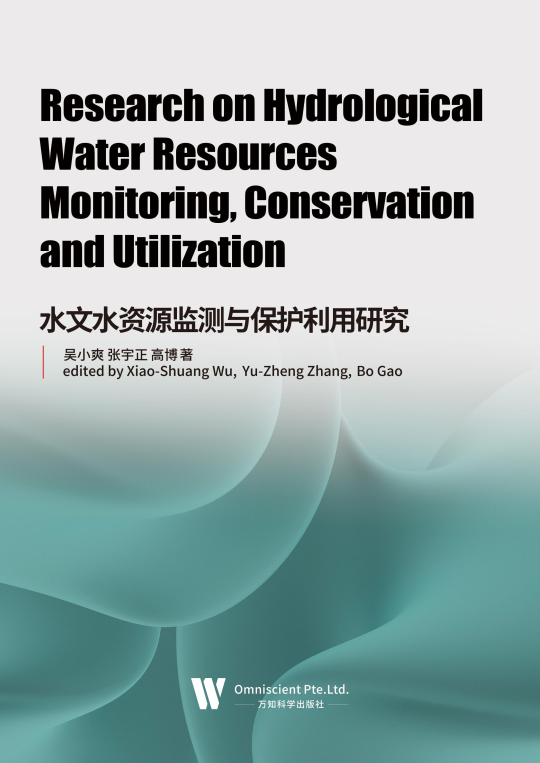
水利工程设计选型独特, CAD设计图纸信息繁多,需要专业人员解析才能获得工程三维形态,且图纸修改过程复杂,设计人员协同困难,使得设计周期增长,设计质量难以控制。 BIM作为一种集成建筑完整数字化信息的三维框架,能够实现水利工程可视化查询和设计的关联修改。
水利工程施工技术复杂,施工人员整体素质较低,工程质量难以保证,运用BIM技术对关键节点进行施工放样,能有效指导现场工人科学有序施工,从而提高工程质量,减少返工,缩短工期,便于施工交底和后期的运营管理。再者,水利工程地形条件复杂,在施工前期需要大量的挖、填土方,土方量计算是否精确关系水利工程最终造价是否准确。运用BIM技术对水利工程进行地形和相关建筑物的建模,实现水工建筑物可视化查询和关键节点质量控制、简化施工总布置优选过程。同时,在此过程中完成快速精确计算土方量,使工程管理与信息技术高度融合,对于提高水利工程信息化率,方便后期运行管理具有意义。基于此,本书就水利工程的设计和施工分别进行了详细的说明,并对BIM技术在其中的应用展开详细研究。

随着全球信息化的飞速发展,信息化系统已经成为国家和政府的关键基础设施,众多的企业、组织、政府部门与机构都在充分共享、利用网络的信息和资源,网络已经成为社会和经济发展的强大推动力。资源共享在广泛应用于政治、军事、经济以及科学各个领域的同时,也产生各种各样的问题,其中安全问题尤为突出。网络信息安全问题不仅涉及个人利益、企业生存、金融风险等问题,还直接关系到社会稳定等诸多方面,因此是信息化进程中具有重大战略意义的问题。
网络信息安全与管理是一门涉及计算机科学、网络技术、密码技术、安全技术、信息论、管理学等多种学科的综合性学科,网络信息安全是指通过采用各种技术和管理措施,使网络系统正常运行,从而确保网络数据的可用性、完整性和保密性。从总体来看,我国网络空间信息安全研究亟待在战略理论、法规政策、关键技术等方面不断积累经验并实现突破,建立和强化我国在全球网络信息空间中的信息安全战略话语权和关键技术主导权,推动我国信息安全实践趋向科学、法治与和谐。
本书从信息安全与管理的相关概念、定义、原则出发,系统剖析了信息安全、信息安全管理领域的现状、存在问题,分别从技术和管理角度分析网络信息安全常见威胁来源与表现形式,结合信息安全相关法律法规等来解读网络信息安全与管理领域未来发展新趋势以及网络信息安全与管理人才培养及市场需求,着重对可信计算技术的融合应用、云环境和物联网环境下新密码体制与数据安全机制、云环境下虚拟化安全分析和防御技术、移动智能终端用户认证技术、入侵检测技术等信息安全领域前沿技术开展研究,最后分别从政务信息安全、企业信息安全、网络安全自动化部署等角度提出网络信息安全与管理解决方案。

图书馆,顾名思义,是搜集、整理、收藏图书资料供人阅览、参考的机构,图书馆有保存人类文化遗产、开发信息资源、参与社会教育等职能。我国历经五千多年历史的积淀,创造了博大精深的中华文化,而图书馆的产生同文字的创造和书写材料的使用密切相关。随着书籍的增多,便出现了如何保存、收藏和使用这些文献的问题,图书馆由此应运而生。因此,图书馆是社会文明发展到一定阶段的产物。
在全球化的大背景下,图书馆的发展进入了一个新的时代,知识和信息的规模化、集成化的趋势日益凸显。在这种全新的社会经济形态之下,图书馆要适应21世纪社会发展所需,必须要重新定位自己的角色和发展战略。本书以我国图书馆的建设和发展作为研究对象,比较详尽地介绍了数字图书馆和智慧图书馆的兴起、特征、发展趋势以及其发展过程中的一些挑战与思考,并阐述图书馆和公共图书馆的建设现状以及向数字图书馆和智慧图书馆的转型。本书的研究内容,有助于我们深刻地认识建设与发展图书馆的紧迫性和必要性,有助于发挥图书馆的社会职能,提高公民的科学文化素质和社会文明程度,有助于传承人类文明,坚定文化自信,推动社会主义文化繁荣兴盛。
本书为保障图书馆长期稳定地生存与发展,面向未来进行图书馆使命、愿景、目标和战略的规划,进而指导、实施、评价和有效控制图书馆中长期发展的动态过程和思维框架。

我国淡水资源总量约为2.8万平方米,是淡水资源丰富的国家之一,但人均占有量却明显不足。伴随城市化进程的推进,我国水资源的短缺已成为常态,为切实解决该问题,采取合理地开发利用对策,做好水资源的监测工作,是当前水资源保护的关键举措。人类文明的发展,导致各类不可再生资源的过度消耗,同时带来不同程度地污染和浪费。其中,最为突出的能源消耗问题就是水资源的过度消耗。做好水资源的治理工作,是促进社会文明进步发展迈向新台阶的关键。基于此,为更好地做好水资源的综合管理工作,应通过先进的水文水资源监测及时和设备,逐步完善水文水资源监测体系和保障体系,为进一步提升水文监测的精准程度和应急预防能力,保证水资源开发利用的持续发展,奠定坚实基础。
水资源开发利用与水文资源监测之间有着较为紧密的关系,通过加强对水文水资源的监测工作,可以更好地掌握水资源动态变化的情况,从而确保水资源的开发利用,确保水资源开发的可用性与可持续性的基本要求。对当地水文水资源进行优化和完善,以此来提升水资源使用的基本效率。在根据水资源水质监测的结果,掌握当地水资源的自动净化能力,满足当地对水文水资源的基本需求,采取科学合理的措施对水资源进行开发和利用,避免造成当地水资源的浪费,减少水资源污染情况的出现,促进当地产业的协调发展,更好的保证水资源开发的效果。
本书先对水文监测的服务需求以及检测技术进行讲解,再对水灾害与水环境保护的措施进行探讨,最后对节水技术以及水资源的开发与利用技术进行研究。对水文监测以及水资源的保护进行详细的研究探讨。

随着互联网计算机技术的发展,对各行业领域都起到良好的推动作用,尤其是将信息化技术应用到传统运营管理中,可以使相关工作更具规范性与系统性。基层水利站是国家水利事业的重要组成部分,围绕其日常工作展开信息化技术革新,可以大幅度提升水利站的建设质量。
近年来,水利事业正由传统水利向现代水利生态水利与可持续发展水利进行转变,信息化是实现转变的重要手段,为全面推动水利信息化工作,各单位从顶层设计、制度保障、建设标准、建设目标等方面进行优化完善。同时借助现代信息通信技术对水利站各项工作进行重塑,水利信息化建设迎来了前所未有的好机遇。然而,信息化技术作为新兴技术,在实际工作中不仅逐步完善,还要搭配相应的基础设施,解决信息化平台运营中的各种问题,这对水利站的信息化革新战略具有重要意义。科技不断发展,信息化在人类生活中占据了越来越重要的地位,信息化在水利工程中的作用也越来越被人们重视,水利设计因其专业化、科学化、艺术化的特点,如果应用计算机、网络、通信技术这些新技术,发展将会突飞猛进,这也是它发展的趋势跟方向。信息化不但可以提高水利设计的水平,还可以加大其服务范围,大大提高其广度和深度,要想加快水利设计信息化,就要运用各种先进的思想跟技术来武装水利设计。
本书是一本关于水路工程的专著,主要讲述的是水利信息化技术。首先本书对水利工程有关知识进行讲述;接着对水利信息化技术展开讲述;最后对新技术的应用展开讲述。通过本书的讲解,希望能够给读者提供一定的参考价值。